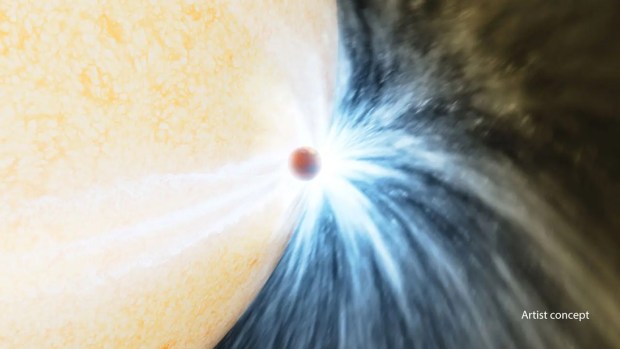Several stars in close proximity exhibit indications of having consumed youthful planets
The examination of 91 star systems indicated that approximately 8 percent of stars in close proximity may have consumed young planetary bodies in their vicinity.

Stars in middle and later stages of their life may not always retain the same number of planets they initially had. Planetary systems experience chaos during their early evolution, leading to some planets being ejected from their star’s gravitational pull and becoming rogue worlds drifting through space.
However, planets face another danger at times. Stars can lose planets not through ejection, but through absorption. A recent study published on March 20 in Nature analyzed 91 nearby star systems. By detecting subtle changes in composition, the astronomers involved in the study found that approximately 1 in 12 stars showed signs of having consumed a planet.
The majority of stars are born in pairs. It is possible that even our Sun had a companion that drifted away due to gravitational forces. The researchers, led by Fan Liu from Monash University in Australia, aimed to identify stars that had ingested planets. However, it is challenging to determine if a star’s atmosphere has been contaminated by planetary material just by observing the star. This is because the elements observed in a star’s spectrum often reflect its formation process.
To overcome this challenge, Liu and his team focused on pairs of stars with relatively close separations, approximately 1 million times the distance between Earth and the Sun. Although these stars may not orbit each other, their proximity suggests that they formed in the same region at the same time, known as “co-natal” suns.
Co-natal stars, sharing a common origin, are expected to have similar compositions. Astronomers can analyze a star’s chemical makeup by studying its light, with specific lines in its spectrum corresponding to different elements.
A clue in the composition
Among the 91 pairs examined, a minimum of seven met the team’s criteria for identifying a star that has consumed a planet. The composition ratio of elements differed between the stars, often with one star having higher levels of heavier elements. Liu notes that many of these stars had higher concentrations of iron, nickel, silicon, and aluminum compared to their companions, indicating potential planetary ingestion.
According to Liu, the planetary ingestion event could have occurred a few hundred million years after the formation of the stars, based on the study and planet formation/evolution models.
Liu also mentions that there was no specific factor linking pairs of stars with evidence of planetary feasting to those without evidence. Analysis of radial velocity data and magnetic activity could offer some insights into this phenomenon.
“If we observe signs of planetary ingestion, it might suggest the presence of external perturbers in the stellar-planetary system,” Liu explains. “That’s why we are conducting radial velocity follow-ups on our candidates.”
While the Sun displays some chemical anomalies, there is no evidence of ingestion events. Further research could reveal more about these occurrences, reminiscent of a famous Goya painting. It could also aid astronomers in detecting indications of planetary material falling into a star, offering a new and exciting approach to exploring the ancient pasts of neighboring stars.
Do not forget to share your opinion with us to provide you with the best posts !



0 Comments